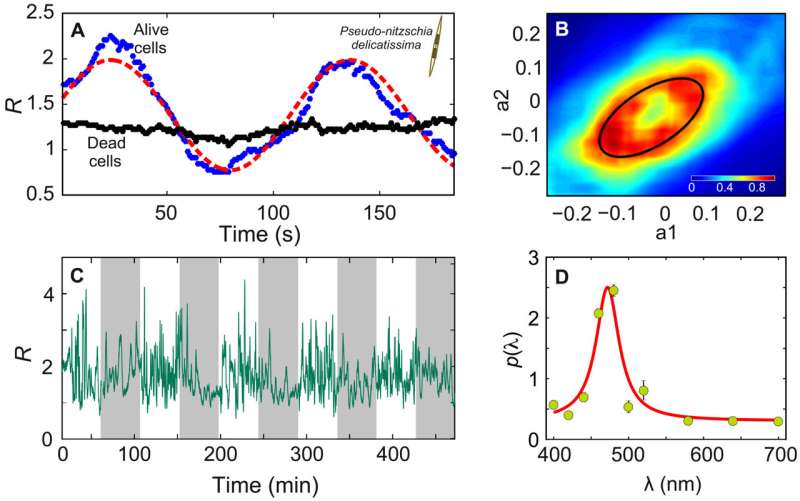December 17, 2021 report
Evidence found of diatoms communicating with each other using natural fluorescence

A team of researchers from IFREMER, French Institute for Sea Research and the Mediterranean Institute for Advanced Studies, IMEDEA, has found evidence of diatom communication through the use of natural fluorescence. In their paper published in the journal Science Advances, the group describes their study of the single-celled alga.
Diatoms are tiny, single-celled alga with cell walls made of silica—plankton are a well-known example. They typically live at or near ocean surfaces, though they have also been found to sink lower. Because they are part of the unicellular community, scientists have assumed that any communications between them are through chemical interactions. In this new effort, the researchers found evidence that they may also communicate using natural fluorescence.
The finding by the researchers came about as they were looking to better understand how phytoplankton communities exist. In particular, they wanted to better understand how individual members of a given community orient themselves. As part of their work, they found that diatoms were arranging themselves in ways that did not appear to be random and they began looking for a signaling mechanism.
They found that when a given diatom sank, its oscillations around its axis allowed it to move in a given direction as it dropped. They also noted that prior research showed that diatoms have DNA producing photoreceptors in the red and infrared band, which struck them as odd because the diatom environment is mostly blue. Further testing showed that they had chlorophyll autofluorescence, suggesting they could emit red light signals as they sank.
To find out if they could also read such signals, the researchers put a small community of them in a tank and shined a red light on them. Doing so incited the community to synchronize their oscillations, and the community took on a uniform shape and moved in unison—a phenomenon that could only have transpired if the diatoms were able to communicate with one another. They suggest further work is required to determine if the diatoms use their communication skills for other purposes, such as choreographing mating.
More information: Joan S. Font-Muñoz et al, Pelagic diatoms communicate through synchronized beacon natural fluorescence signaling, Science Advances (2021). DOI: 10.1126/sciadv.abj5230
Journal information: Science Advances
© 2021 Science X Network


















